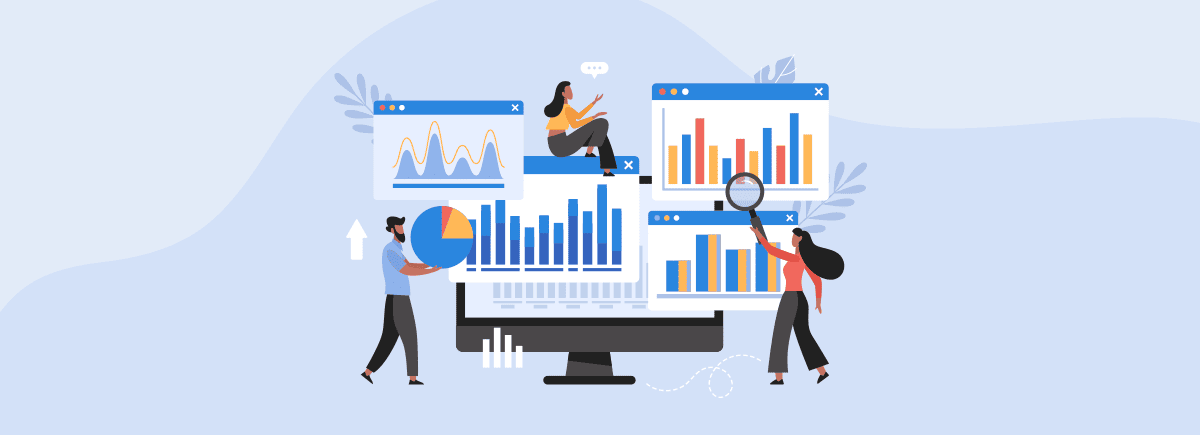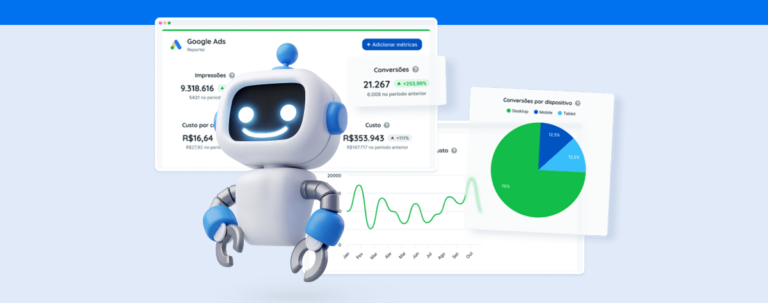Not sure whether to invest in paid traffic or organic traffic? Understand the unique advantages of each approach and consider key factors to define the best strategy for your business
In the vast world of digital marketing strategies, two powerhouses stand out in the realm of online business development: investing in paid traffic and boosting qualified organic traffic through SEO tactics.
While these two approaches may follow distinct paths, they both contribute to boosting website traffic and can be instrumental in gaining authority, acquiring valuable leads, and, most importantly, attracting new customers. And when combined, they spell success for your business!
Still unsure about which strategy to prioritize or whether you should invest in both simultaneously? We’ve got you covered! Take a moment to delve into our comprehensive guide that demystifies paid and organic traffic, outlines the unique advantages of each, how they generate results, and other vital tips for success. Let’s get started!
Paid Traffic vs. organic traffic: the strategies
First, comprehending the concepts of paid and organic traffic is paramount. Each strategy brings unique benefits, propelling you closer to your marketing goals. It’s also fundamental to understand the differences between these strategies. Explore it all below!
What is paid traffic?
When it comes to digital marketing, paid traffic emerges as a game-changing advertising model. It’s all about advertisers paying to showcase their ads across many online platforms. Think search engines like Google, social media networks like Facebook, Instagram, and TikTok, third-party websites like Display Network, and other channels.
These paid campaigns can be tailored to achieve diverse objectives, whether it’s skyrocketing brand awareness, generating leads, or driving sales. They can also be highly targeted by segmenting the campaigns based on valuable information such as specific keywords, demographics, geographic data, or even the interests of your target personas.
With a financial investment in the mix, paid traffic fuels faster results compared to its organic counterpart. You’re essentially paying for your ads to be served directly to the right people, boosting your competitiveness in the online landscape.
However, managing your allocated budget wisely and diligently monitoring campaign performance is crucial. This ensures that your return on investment remains consistently positive.
Advantages of the strategy
When it comes to digital marketing, investing in paid traffic offers a plethora of benefits for digital marketing. Let’s explore the key advantages:
- – Reach the Right Audience with precise targeting based on interests, behaviors, and demographics to connect with your ideal audience. – This boosts ad relevance and maximizes campaign effectiveness.
- – Budget Control: set your desired budget, often based on a daily allocation that can be optimized at any moment.
- – A crystal-clear view of your ad’s performance metrics. Monitor reach, click-through rates (CTR), and conversions with precision. This invaluable data allows you to measure your return on ad spend (ROAS) and make necessary campaign adjustments for optimal results.
- – Watch your website traffic soar and your brand visibility skyrocket, whether on search engines, social networks, or Google partner sites and apps.
- – Adjust your campaign on the fly, optimize its performance, and swiftly adapt to changes in market trends.
While paid traffic reigns supreme in the short term, it’s essential to remember that it’s not the sole path to digital marketing triumph.
To achieve long-term success, combine it with other techniques such as SEO, content marketing, and social media management.
What is organic traffic?
When it comes to driving organic traffic to your website or blog, Search Engine Optimization (SEO) takes the spotlight. This powerhouse strategy allows you to attract visitors organically without paying for advertising.
Working hand in hand with content marketing, SEO techniques play a pivotal role in securing prime positions on search engines like Google, which helps increase your authority in the digital landscape.
So, how does it work? It all begins with creating compelling, relevant content that caters to your target audience’s needs. Think captivating blog articles, engaging videos, eye-catching infographics, and other valuable materials based on essential keywords that help solve their questions and cater to their pain points.
The Advantages
The advantages of organic traffic include:
- – cost-effectiveness: unlike paid media, it doesn’t require shelling out money for advertising. However, for optimal success, leveraging an – SEO tool can work wonders. These are tools that assist with keyword research and optimization.
- – increased site visibility in search results is a game-changer. Although it takes time to bear fruit, the results are solid and worth the wait.
- – Building credibility is another significant advantage of organic traffic. Users tend to trust and rely more on organic search results that rank well in search engines.
- – Enhancing the user experience. By focusing on creating useful, relevant content tailored to your target audience’s needs, you provide a satisfying user experience.
However, It’s important to note that building organic traffic takes time and effort. To achieve significant results, you need a consistent, long-term strategy.
What to consider when deciding between paid and organic traffic?
Now that you’re well-versed in the concepts and advantages of paid and organic traffic, it’s time to dive into the key factors that can influence your decision when choosing the best strategy (or the perfect blend of both). Let’s explore them below!
- 1. Marketing Objectives: Clarify your digital marketing goals and the direction you want your business to take. If you want to increase website traffic swiftly, paid traffic might be your go-to option. On the other hand, if your focus is on building a sustainable, long-lasting user base, organic traffic can be more effective.
- 2. Available Budget: Paid traffic demands a financial investment, while organic traffic can be low-cost or even free. However, it requires dedicated effort, time, and resource investment. Assess your digital marketing budget and choose the approach that works for your financial capabilities.
- 3. Target Audience: deeply understanding your target audience is crucial when selecting the most efficient approach. Consider preferences, behaviors, and interests. Paid traffic can quickly reach a specific audience, while organic traffic helps build a loyal and engaged user base over time.
- 4. Competitiveness: Evaluate your competition and their traffic-driving strategies to identify opportunities for your business to stand out in search engines and other channels. This insight will empower you to devise unique approaches that make your brand shine.
- 5. Available Time: Generating significant results can take longer with organic traffic compared to paid traffic. If you have a tight deadline to meet your marketing objectives, ads may be the ideal choice to accelerate your progress.
- 6. Long-Term Strategy: Keep in mind that organic traffic requires time to yield substantial results. However, it provides a more constant and enduring return. Embrace a long-term perspective to nurture sustained growth and success.
In summary, carefully evaluate these factors, especially your marketing objectives, to make an informed decision between paid and organic traffic in your digital marketing endeavors.
Combine paid and organic traffic
While paid and organic traffic are powerful strategies on their own, it’s important to note that they can work wonders when combined, given the right resources and budget.
By combining paid and organic traffic strategies, you can boost your brand and solutions with ad campaigns short-term. For long-term results, you can employ SEO techniques and boost your brand visibility and credibility.
Using both strategies gives you the best of both worlds. You achieve faster audience reach and engagement through paid media while building a robust and enduring presence through the organic channel.
Measure paid and organic traffic results more efficiently
As we wrap up, we can’t emphasize enough the importance of regularly analyzing the results of your paid and organic traffic efforts. This practice allows you to gain deep insights into the performance of each strategy and identify crucial optimizations to enhance your online presence.
Reportei’s automatic reports will help you out, capturing all the necessary metrics for monitoring your website (from Google Analytics), paid media channels (like Google Ads and social media platforms), and organic performance (Google Search Console).
Gone are the days of laborious manual tasks. With automatic reports, you can save precious time and focus on carrying out strategic analyses, extracting invaluable insights, optimizing your actions, and maximizing your return on investment for both paid and organic traffic!





